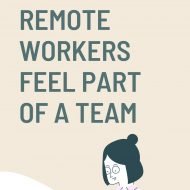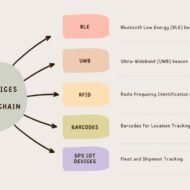Currently Browsing: Productivity
Posted by Managementguru in Journals and Planners, Productivity
on Dec 12th, 2022 | 0 comments

Did you now a 5 minute journaling everyday can transform your life! Gratitude and Self-Care journals can help you organise your thoughts, reflect on the day, and assess where you are and where you want to go. How Can Journaling Help Me? One of the best solutions is to write a journal everyday. Journaling is a fantastic self-care technique that not only improves feelings of happiness, but also reduces stress, clarifies thoughts and feelings, and ultimately helps you get to know yourself better. Why is Journal Important for Self Care? When your world seems to be in chaos, keeping a journal can help you create order. You learn about yourself by revealing your deepest fears, thoughts, and feelings. Consider your writing time to be personal relaxation time. It’s a good time to unwind and de-stress. What is the purpose of keeping a personal journal? A personal journal is a good, ongoing way to record your observations and thoughts—your personal responses to your surroundings—and thus develop writing ideas. Gratitude Journals and Self Care Journals actually Improve productivity I laughed when I first heard of a “gratitude journal.” I never expected it might turn out to be “the” success tool I was looking for. I initially attributed a gratitude journal for people who were unhappy, unfocused, and unsure of their path. It was a squandering of time. I’m extremely busy. I’ve got more important things to do. I was totally wrong. A gratitude journal actually improves productivity. Click the link below to download your copy now 👇 👇 Daily Gratitude Journal | Self Care Journal | 30 Days Self Care Challenge Some of the world’s most successful people keep gratitude journals, including Oprah Winfrey, who is worth $3 billion and you may have heard of her. Writing down what you’re grateful for makes you happier. Happiness boosts productivity. As a result, a gratitude journal may be the most underutilised tool for increasing productivity. Weekly IntrospectionThere is a section at the end of each week in the Gratitude Journal for your Weekly Reflection. This is where you can reflect on positive moments from the week and choose four or five to list. Self Care Journal and Challenge When we are so focused on getting the job done that we neglect our own needs. However, long-term, successful entrepreneurs and business leaders have learned this lesson (often the hard way). They understand firsthand how important it is to make time for yourself even during the busiest of times. Daily Gratitude Journal | Self Care Journal | 30 Days Self Care Challenge 👇 👇 Eight strategies for taking care of yourself while you take care of business Create “me time” in your daily routineExercise dailyLearn to say noFind ways to unwind every dayNourish your bodyEnjoy a hobbyMake sleep a priorityBe in the moment I value sleep as the most important factor that we need to prioritize in order to have a refreshing day. If you feel refreshed, your brain automatically is on high alert and productive ideas come flowing through. If you found this post useful, leave your thoughts in the comments and also don’t forget to share your experiences of...

Posted by Managementguru in Human Resource, Productivity
on Oct 1st, 2022 | 0 comments

When you think of your career prospects and your personal life, you might not be someone who tends to think of your happiness as being something that makes a success story. However, your working life might comprise a high percentage of what you do in any given week and putting your emotional state to one side for that long could have negative consequences on your mental health. There are many ways in which your happiness might be affected in the workplace, and that means that there are potentially many ways for you to go about improving how you feel, if you think that there is room to do so. Happiness in workplace Mistreatment and Resolution Not everyone is fortunate enough to work in an environment where they are valued as individuals by their employer. To those who do work within an unpleasant or negative space, it can feel as though you’re trapped, with little that you can do about it. There are always HR and similar routes if you feel as though something needs to be done about it, but it might also be that the problem that has arisen is to do with a particular issue or dispute, such as something to do with overtime pay, for example. In these cases, it helps to be sure. Therefore, taking the steps to calculate regular rate of pay can help you to understand your position and if you’re being taken advantage of, potentially leading to the next step of getting legal help involved. The Space Itself You might not even think about how much the physical space that you work in impacts your happiness, but if you’re finding yourself to be miserable most days at work, it could certainly be worth investigating. If you don’t find yourself in a position to do much, it can lead to some despair, but it also might be something that opens a conversation with your co-workers and employer. Therefore, the first step might be to simply recognize the kind of impact that workplace design can have on the mood and productivity of the employees working there. When tied to productivity like this, the move to have the environment changed for the better could appeal to the reasoning of the higher-ups. Your Personal Time If you’re someone who doesn’t particularly enjoy your time spent working, it might cause you some dissatisfaction that it takes up so much of your personal time. If this is the case, it might be time to consider some flexible working options that could potentially change that. If this is a conversation that your current employer is willing to have, it might help you to adjust more comfortably within your current job. However, there’s a chance that they might not be willing to do so, meaning that you would likely be encouraged to look for work elsewhere in order to find a situation that suits you better. This might not be such a bad thing, though, and understanding what makes you happy in a day-to-day way can help you to customize your career to your own...

Posted by Managementguru in How To, Human Resource, Productivity
on May 18th, 2022 | 0 comments

The rise of the remote workforce is a trend that no one can deny. While it was already starting before the pandemic, lockdowns and social distancing suddenly emphasized the need for remote teams to be in place. Today’s employers are now finding that remote teams can be incredibly productive and effective, allowing the business to occupy less physical space and thereby cut down on overhead expenses. But one challenge has popped up and that’s how you go about making remote workers feel part of a team? Here’s a look at some simple tips you can use that will ensure your staff feels like a team no matter where they’re located and working from. Hold Weekly Virtual Meetings The first way to make remote workers feel part of the team is to encourage communication by holding weekly virtual meetings. Even if nothing is pressing to discuss, this is an opportunity for everyone to check in with each other, share concerns or ideas, and start to create that sense of teamwork. They will realize they aren’t alone and they aren’t working in a void. If possible, use a video chat service for the meetings such as Zoom so that it’s more personal. Bring Remote Workers Into the Office Occasionally Depending on the space available in the office, and where your remote staff is located, you may want to have them come into the office occasionally. Some businesses will ask remote staff to work in the office once a week, once a month or quarterly – whatever you see fit. It puts a face to the name and starts to solidify the work relationships that are so important to the success of a business. Organize a Virtual Scavenger Hunt Why not inject some fun into the team-building exercises and have employees take part in a virtual scavenger hunt. There are companies you can use that do all the planning and work, making life easy for you and setting up something memorable and fun for staff. These kinds of activities also work great for companies that have a combination of in-person and remote workers, as they can all take place in this virtual activity. With a scavenger hunt, employees will be working in teams, so be sure to team people up with others they may not usually work with or chat with. It will act as an icebreaker that way. Use Tech Tools That Make Remote Employees Feel Connected Technology will be your best tool in helping remote workers feel connected so look for apps, software, and other tools that encourage this kind of set-up. Platforms that allow them to chat in real-time, share data, charts, track projects, and so forth will improve communication and workflow. The Remote Workforce Is the Present and Future In terms of future trends, building a robust remote workforce is no longer in the distant future as the time has come. A remote workforce can offer all kinds of benefits for both employees and employers, so it’s time to embrace it and ensure that everyone feels part of a...

Posted by Managementguru in Artificial Intelligence, Business Management, Operations Management, Productivity, Sales, Supply Chain Management, Technology
on Mar 25th, 2022 | 0 comments

Supply chain management (SCM) is the broad range of activities needed to plan, control and execute a product’s flow, from procuring raw materials and production through distribution to the final customer, in the most streamlined and cost-effective way possible. Ensuring all supply chain components are running as smooth as possible helps businesses to provide on-time delivery of products and services, with changing consumer demands and supply chain disruptions brought about by the recent pandemic. This blog post’s focus is to throw some light on “How IoT aka Internet of Things is bringing about a big impact” in the future of supply chain activities. Let’s first understand the 7 Principles of SCM Adapt supply chain based on service needs of every customer segmentCustomize logistics network for each customer segmentAlign demand planning across the supply chainDifferentiate product closer to customer’Outsource strategicallyDevelop information technology that support multi-level decision makingAdopt both service and finance metrics Now let’s look at the Impact of IoT in the future of supply chain. Asset Tracking One of the top and fundamental function of IoT in supply chain is asset tracking. Locating containers, objects and personnel is considered way important among the organizations Through RFID and GPS sensors, real-time location of a product, truck or shipping container can be known by logistics operators. Fleet Management Fleet management is another area to improve the efficiency of logistics operations. Through IoT it is now possible to connect all fleets to each other, which allows the fleet dispatchers to collect breadth of data from their fleet operations. Data included are: 1. Weather conditions 2. Traffic situations 3. Driving pattern and 4. Average speed When thoroughly analysed, this data can help logistics operators to find more efficient routes, manage driver head counts, save on fuel cost and optimize their fleet reliability, availability and efficiency. Tracking and Monitoring Inventory Levels in Real Time IoT sensors play a great role in tracking and monitoring inventory levels in real time. Amazon is now using Wi-Fi robots to scan product codes present on the products to keep track of their inventory levels. Bluetooth tags and beacons offer tracking data in more confined areas- many retail stores are using these tracking technology software to monitor customer traffic and provide marketing messages to their customers. Vendor Management By asset tracking., organizations tend to come out with high quality output, which in turn improves their relationship with the vendors. A recent survey states that up to 65% of the value a company’s product /service is derived from its suppliers. Predictive Maintenance Being an asset intensive process, right from production machinery to warehouse equipment and delivery vehicles, these assets need to be continuously monitored to ensure their functional efficiency. Smart sensors help the logistics operators gauge if a particular asset needs to be serviced ahead of time. This reduces considerable asset down time and asset failure, thus saving cost including maintenance...

Posted by Managementguru in Human Resource, Learning, Organisational behaviour, Productivity, Training & Development
on Feb 19th, 2022 | 0 comments

Starting a new job can be one of the most memorable life experiences, but it can also be stressful. You’ll need to know how to act, what to wear, and figure out the many intricacies of the new company so you can fit in. Many people remember their first day of a new job because of the pressure they feel. Luckily, you can reduce this anxiety by planning your first day as best you can and learning how to communicate with your new bosses and coworkers. Here are tips for your first day on the new job. Ask Questions The onboarding process will allow you to ask as many questions as necessary so you can feel confident in your new position. If you don’t ask the questions you need to ask on your first day, you might be setting yourself up to fail. Everyone expects questions for the first few weeks to months after you’ve been hired because everything will be new to you. However, many people might not expect as many questions when you’re in your sixth month of employment. Instead of waiting to ask questions, make sure you ask the right person the questions you need to be answered so you can have a successful first day and set yourself up for a successful career within the company. You can also prepare questions beforehand that will demonstrate your desire to learn about the company. For example, you can ask questions such as what goals the company has and how you can help them achieve them. Be prepared to have many questions pop into your head, such as where to find the bathroom, so you can immediately get all of the basic answers you need. Prepare Your Intro Your new coworkers are going to be curious about you and ask you questions about yourself. It’s best to prepare what to say. Prepare an elevator pitch about yourself so you can describe who you are, where you were working before, and your expertise. Your pitch should only be 30-seconds long. Remember, your coworkers are curious about you, but they still have jobs to do, so it’s best not to take up too much of their time. Arrive Early Ensure you’re not late for your first day because that can put a target on your back and make your managers feel like you already don’t care about your job. Try planning your route the night before so you can arrive 15 minutes early. You can even practice the commute so you know how much time you’ll need during the morning rush hour. Once you arrive at work, consider staying in your car or going to a cafe so you don’t walk into the building early. While it’s always a good thing to look eager to your new bosses, you shouldn’t appear as someone who will always show up early, especially since you’ll still be expected to stay throughout the entire day and until working hours are over. Socialize If you want to succeed in a new position, you’ll need to frequently deal with people, which means learning how to successfully socialize, solve problems, and effectively communicate. Getting along with your coworkers can make going to work much easier, but associating with the right coworkers can help you grow within the company. After all, you never know which of your coworkers will be promoted to being your boss or have the ability to promote you to upper management so you can get a promotion yourself. Stay Calm While going to your first day of a new job can be nerve-racking, remember you were hired for a reason. You beat out the...










